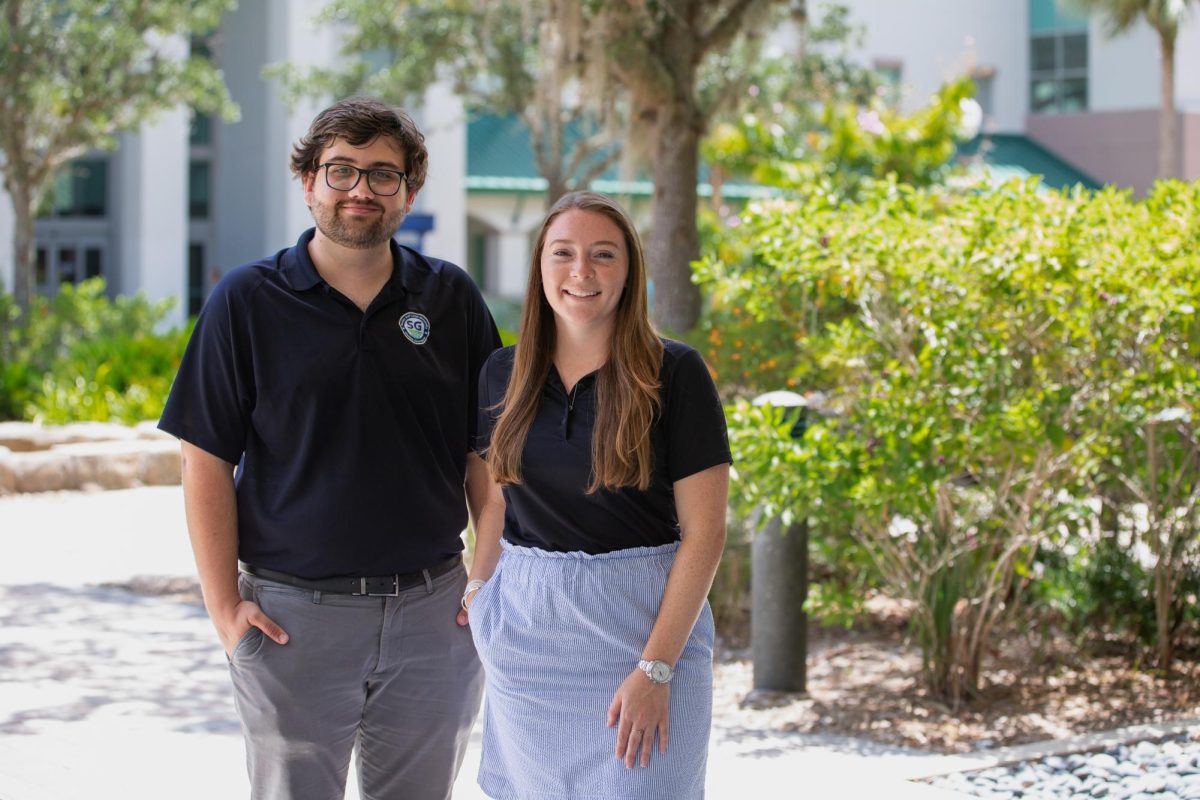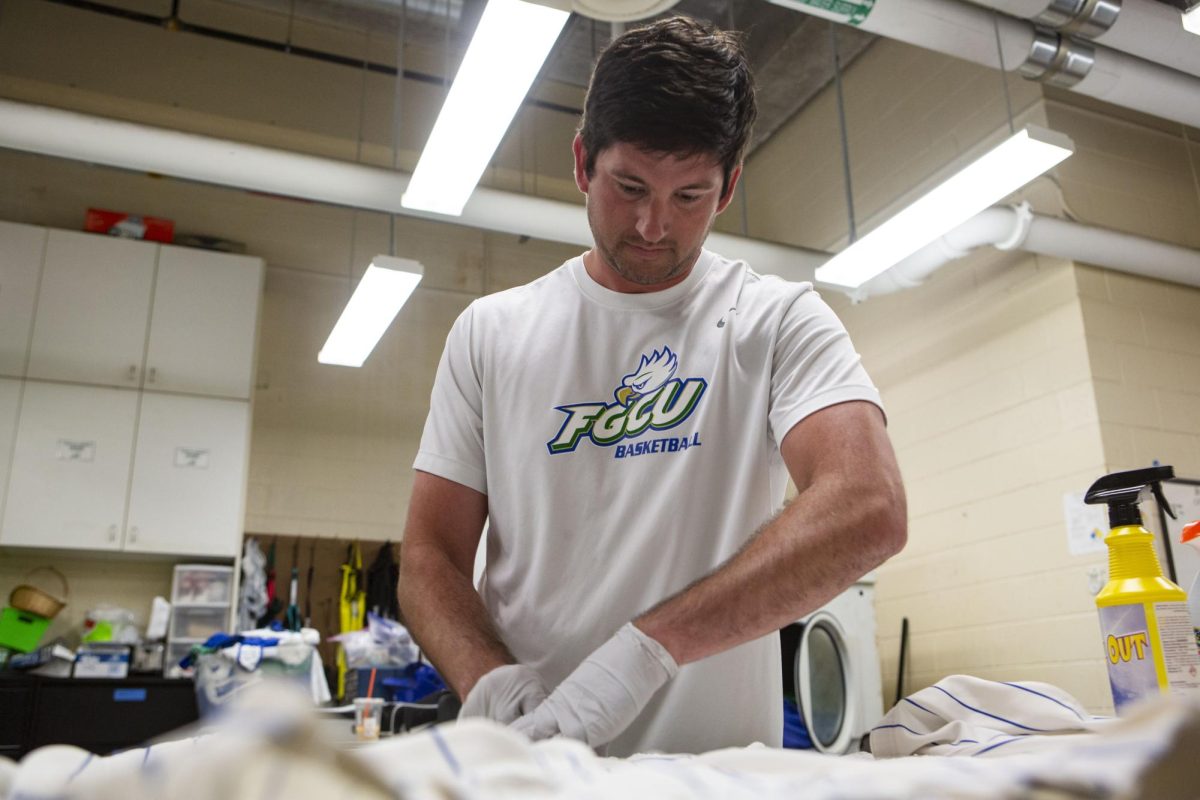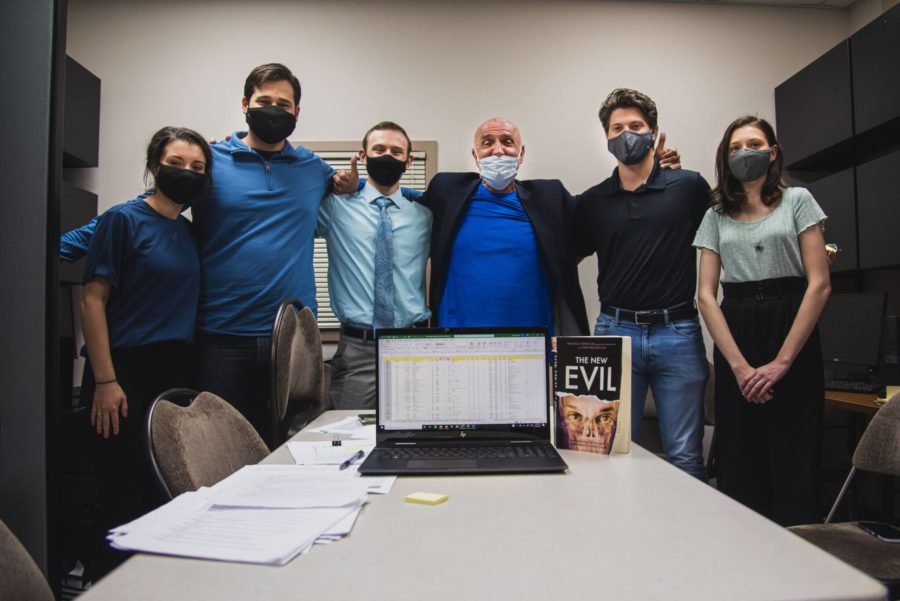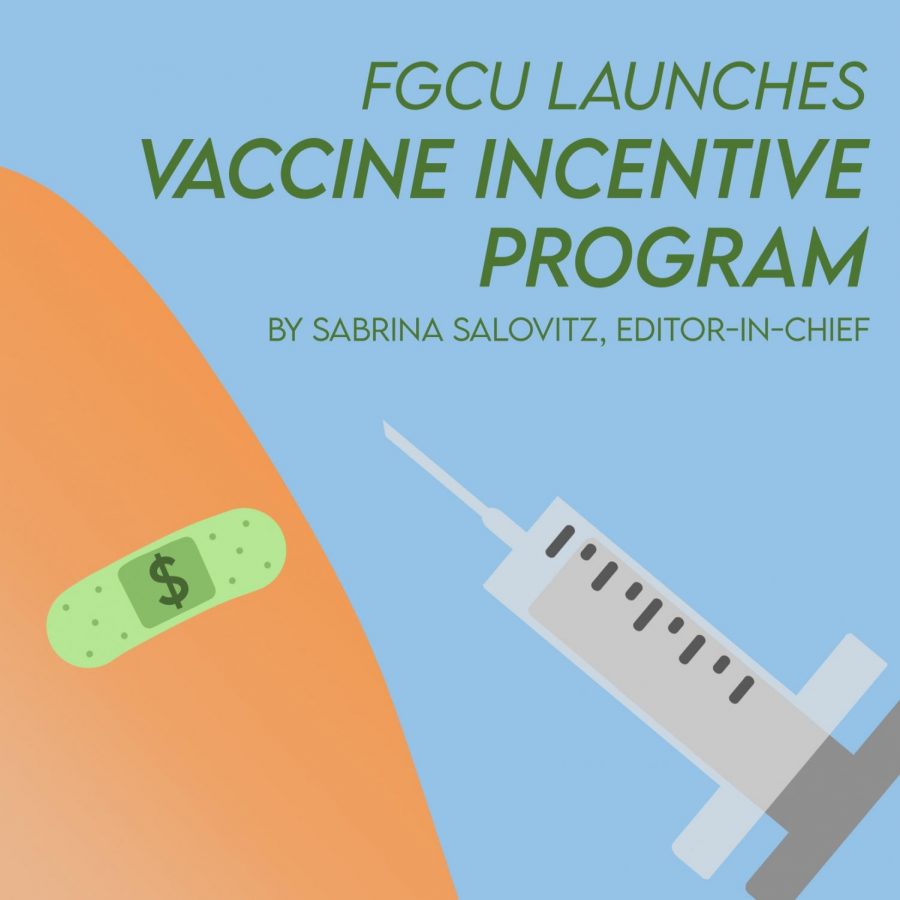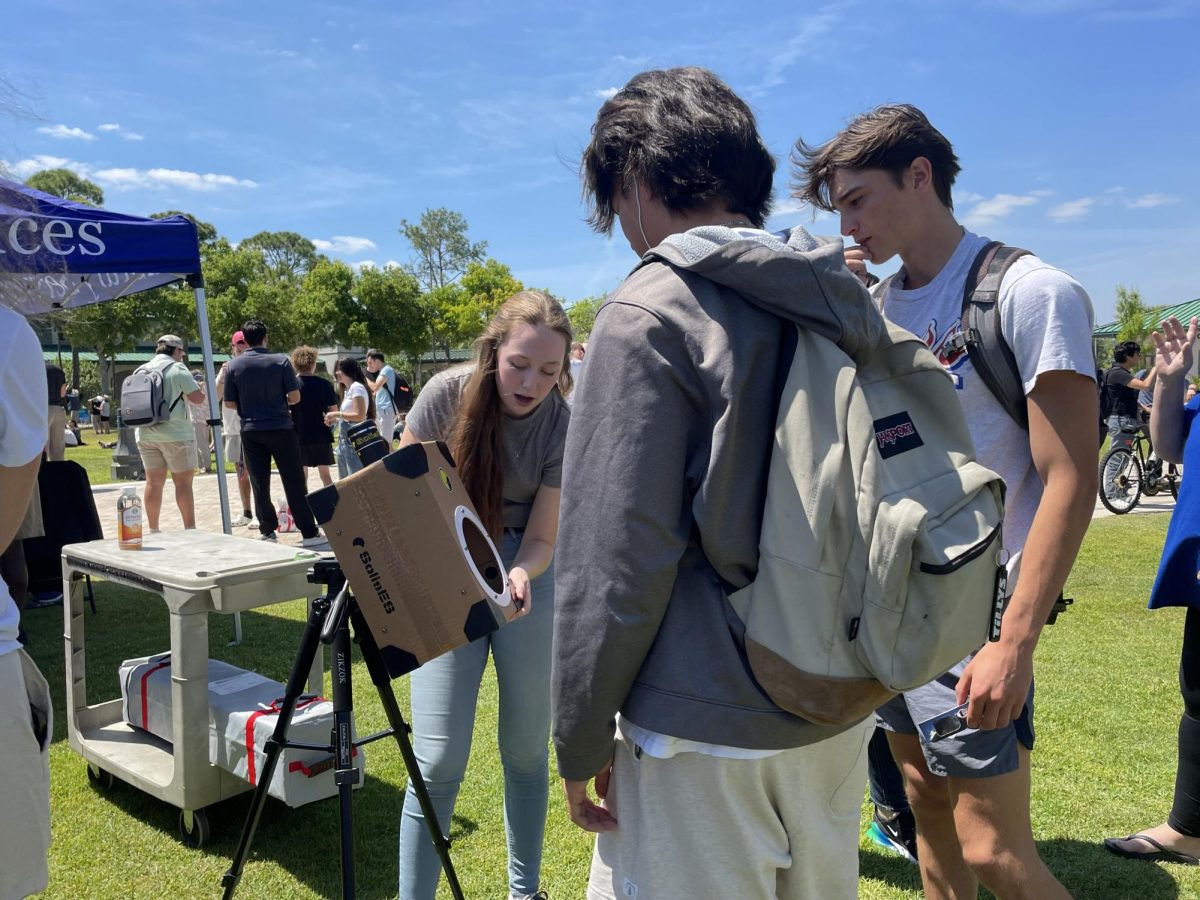By Nina Mendes
News & Features Editor
Every Wednesday in Whitaker Hall, room 266A houses a group of students who share a passion for one unique pastime: serial killer research.
FGCU Associate Professor of Psychology Dr. Terence Leary is currently spearheading the serial killer database on campus. The project is managed by eight psychology students and supported by the university’s mathematics and forensic studies departments.
“People have a fascination for the topic,” Dr. Leary said. “They want to hear about it, and they have a high appetite for it.”
Netflix documentaries about spree killers and mass murderers have gained worldwide recognition lately. Dr. Leary suggested these shows might have influenced people’s sudden interest in the topic.
The creation of this database allows the team to quantitatively evaluate psychological issues with serial killers.
Dr. Michael Aamodt of Radford University is the founder of this project and has collected data since 1992 to create the world’s most comprehensive serial killer database.
He chose to partner with FGCU to maintain and expand the scope of research.
As of March 2021, the database consists of over 5,630 serial killers.
In addition to gathering the names, crimes and prison sentences of these individuals, the database is a source that statistically analyzes relationships among variables. The team looks to determine trends among killers to identify high-risk factors to prevent their behavior.
The serial killer research team uses around 165-185 variables to classify killers.
“One thing we see that’s very common is that some of [the killer’s] practices stem from childhood,” Tommy Danzi, a student on the research team, said. “If there was psychological, physical or sexual abuse, that’s going to affect how the killer handles things when they are older.”
Humiliation/bullying within a killer’s life is also noted within the team’s research.
The team has identified cruelty towards animals, bed-wetting, and fire-setting as other common warning signs that serial killers may exhibit in their youth.
Rituals and customs performed before, during or after a murder is another factor that the database tracks.
Ben Fenuccio, a member of the research team, considered how the ceremonial aspect of a killing is sometimes sentimental to mass murderers.
“It’s imperative that we look at their ritualistic practice that they are going to carry out after the killing because that impacts their method,” Fenuccio said. “[Some might] preserve a specific part of the body and take a totem. It’s critical that we look at all aspects of this individual.”
Their research also thoroughly analyzes the differences between men and women serial killers.
According to Dr. Leary, a common myth within this line of research is that there are no women serial killers.
About 11% of the database are female murderers. Many of them work in husband and wife, boyfriend and girlfriend, and same-sex teams.
“Historically, people have felt much empathy for women because they are viewed as victims of an evil rotten male, which in some cases is true,” Dr. Leary said. “People feel that the woman has been victimized by the male and were unwilling accomplices; however, the women were extremely shrewd and quite capable of doing this on their own.”
Gerald and Charlene Gallego are a prime example. The couple terrorized Sacramento, California, and murdered ten victims, mostly teenagers, between 1978 and 1980. Gerald and Charlene raped and sexually abused a majority of their victims before killing them.
The couple was eventually caught, and both pled not guilty to charges of kidnapping and murder. Charlene’s attorneys convinced prosecutors to allow her to accept a plea deal by testifying against Gerald. Her sentence was reduced to 16 years and eight months, but Gerald was sentenced to death.
FGCU’s serial killer research team has also concluded that men and women have different motives for killing.
According to their data, financial gain and revenge are drivers for most women who kill. For men, it’s enjoyment.
“There’s a plethora of different motives and methodology that we look into,” Fenuccio said. “It also ties into the victimology and who they tend to go after. It’s almost a demographic that they specialize in, which is weird to say.”
Men and women also have contrasting methods of murder, which the team has taken into account. Women are more likely to poison victims, where men tend to resort to a more violent approach to killing, like stabbing, bludgeoning or strangling.
Danzi suggested that this variation might be linked to testosterone levels.
A killer’s IQ may also play a role in how they carry out a murder. According to Dr. Leary, another common myth is that all mass murders are intelligent.
“Some will eat the body; some will cut them up into pieces; others will drink the blood,” Dr. Leary said. “The ones who engage in these bizarre activities tend to be brighter and of higher IQs. The intelligent men that do this will do it for enjoyment, and the ones who are not intelligent do it for sexual pleasure.”
The team gets anywhere from 10-15 requests a week from people wanting access to the database for research purposes.
Their work is featured in a novel written by Michael H. Stone, a clinical psychiatry professor at Columbia University, titled “The New Evil.”
WGCU and the Fort Myers News-Press have also covered the database in past years.
The research team is currently working on a project studying strangulation and asphyxiation with Boston College, which is considered the worldwide leader in serial killer data.
“Most of the research that you are going to find on serial killers are primarily case studies and qualitative data,” Danzi said. “We have the most comprehensive database around, so we can really fill in the gaps of the research.”
Dylan Randall is another student a part of the serial killer research team. He recently created an Instagram page, @FGCU_SKD, to raise awareness about the database and spark connections with other universities.
Other students on the team include Cameron Boles, Matthew Graves, Matthew Haftke, Matthew Miller and Paige Wanderlingh.
FGCU’s Psychology Chair Kelly Schuller, Forensic Anthropology Consultant Heather Walsh and Database Administrator Larry Southard have all contributed to the research as well, along with many others.
The serial killer research team is looking to publish their annual report within the near future as the database continues to grow.
“We have an exceptional gem here at the school,” Fenuccio said. “This database is something we are all very proud to have at our university. We’re carrying the torch that the people before us set up, and we don’t want to see this flame be extinguished.”
To request access to the database, visit: https://www.fgcu.edu/skdb/
FGCU Students Compile Worldwide Comprehensive Serial Killer Database
March 22, 2021
From left to right: Paige Wanderlingh, Tommy Danzi, Ben Fenuccio, Dr. Leary, Dylan Randall, Cameron Boles (Matthew Miller, Matthew Haftke, and Matthew Graves are not pictured).
EN photo by Sam Romero.
Story continues below advertisement
Leave a Comment
More to Discover
CONTACT US
10501 FGCU Blvd. South
Fort Myers, FL 33965
Phone: 239.590.7945
EXECUTIVE EDITOR
Tori Foltz
[email protected]
STUDENT MEDIA ADVISER
Justin Paprocki
[email protected]
10501 FGCU Blvd. South
Fort Myers, FL 33965
Phone: 239.590.7945
EXECUTIVE EDITOR
Tori Foltz
[email protected]
STUDENT MEDIA ADVISER
Justin Paprocki
[email protected]


